Jürgen Gerhard
Tree-Based Deep Learning for Ranking Symbolic Integration Algorithms
Aug 08, 2025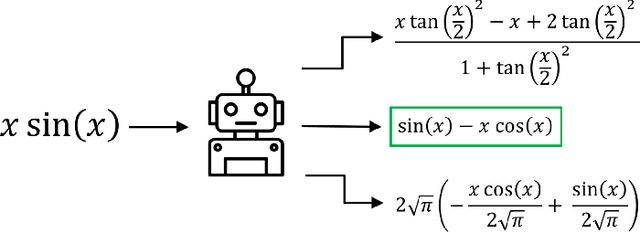
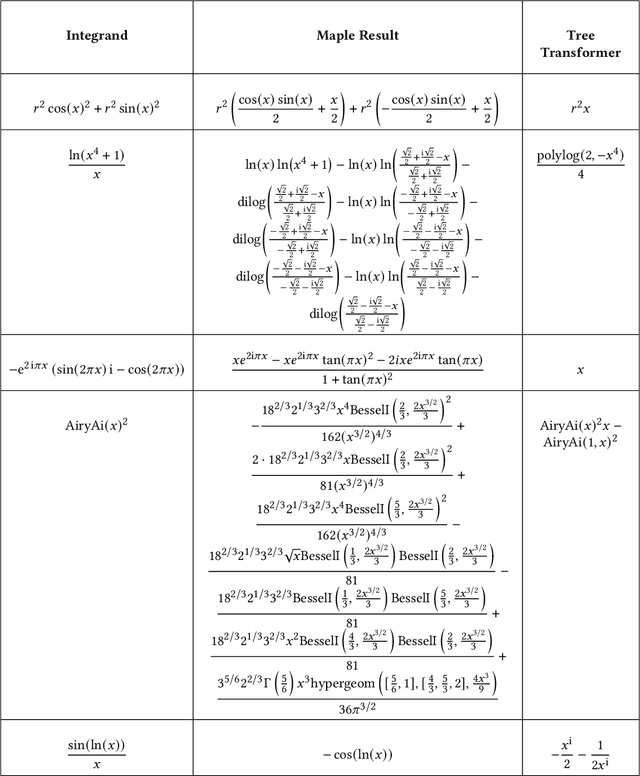
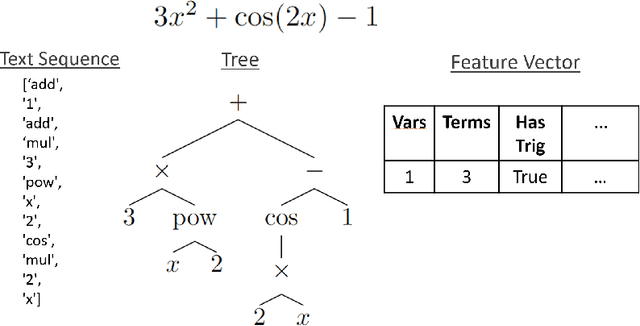
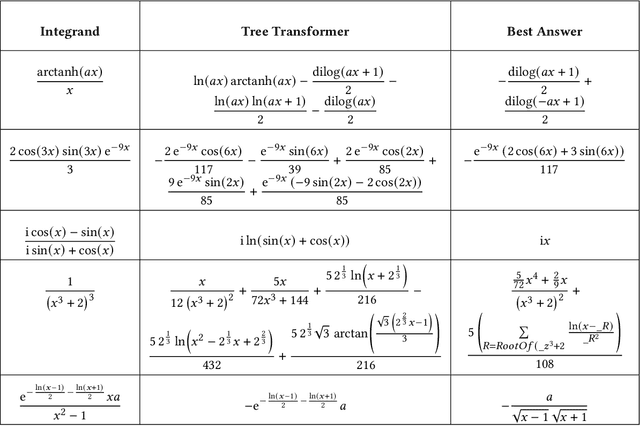
Abstract:Symbolic indefinite integration in Computer Algebra Systems such as Maple involves selecting the most effective algorithm from multiple available methods. Not all methods will succeed for a given problem, and when several do, the results, though mathematically equivalent, can differ greatly in presentation complexity. Traditionally, this choice has been made with minimal consideration of the problem instance, leading to inefficiencies. We present a machine learning (ML) approach using tree-based deep learning models within a two-stage architecture: first identifying applicable methods for a given instance, then ranking them by predicted output complexity. Furthermore, we find representing mathematical expressions as tree structures significantly improves performance over sequence-based representations, and our two-stage framework outperforms alternative ML formulations. Using a diverse dataset generated by six distinct data generators, our models achieve nearly 90% accuracy in selecting the optimal method on a 70,000 example holdout test set. On an independent out-of-distribution benchmark from Maple's internal test suite, our tree transformer model maintains strong generalisation, outperforming Maple's built-in selector and prior ML approaches. These results highlight the critical role of data representation and problem framing in ML for symbolic computation, and we expect our methodology to generalise effectively to similar optimisation problems in mathematical software.
The Liouville Generator for Producing Integrable Expressions
Jun 17, 2024Abstract:There has been a growing need to devise processes that can create comprehensive datasets in the world of Computer Algebra, both for accurate benchmarking and for new intersections with machine learning technology. We present here a method to generate integrands that are guaranteed to be integrable, dubbed the LIOUVILLE method. It is based on Liouville's theorem and the Parallel Risch Algorithm for symbolic integration. We show that this data generation method retains the best qualities of previous data generation methods, while overcoming some of the issues built into that prior work. The LIOUVILLE generator is able to generate sufficiently complex and realistic integrands, and could be used for benchmarking or machine learning training tasks related to symbolic integration.
Symbolic Integration Algorithm Selection with Machine Learning: LSTMs vs Tree LSTMs
Apr 23, 2024



Abstract:Computer Algebra Systems (e.g. Maple) are used in research, education, and industrial settings. One of their key functionalities is symbolic integration, where there are many sub-algorithms to choose from that can affect the form of the output integral, and the runtime. Choosing the right sub-algorithm for a given problem is challenging: we hypothesise that Machine Learning can guide this sub-algorithm choice. A key consideration of our methodology is how to represent the mathematics to the ML model: we hypothesise that a representation which encodes the tree structure of mathematical expressions would be well suited. We trained both an LSTM and a TreeLSTM model for sub-algorithm prediction and compared them to Maple's existing approach. Our TreeLSTM performs much better than the LSTM, highlighting the benefit of using an informed representation of mathematical expressions. It is able to produce better outputs than Maple's current state-of-the-art meta-algorithm, giving a strong basis for further research.
Generating Elementary Integrable Expressions
Jun 27, 2023Abstract:There has been an increasing number of applications of machine learning to the field of Computer Algebra in recent years, including to the prominent sub-field of Symbolic Integration. However, machine learning models require an abundance of data for them to be successful and there exist few benchmarks on the scale required. While methods to generate new data already exist, they are flawed in several ways which may lead to bias in machine learning models trained upon them. In this paper, we describe how to use the Risch Algorithm for symbolic integration to create a dataset of elementary integrable expressions. Further, we show that data generated this way alleviates some of the flaws found in earlier methods.
Semantic Preserving Bijective Mappings of Mathematical Formulae between Document Preparation Systems and Computer Algebra Systems
Sep 17, 2021
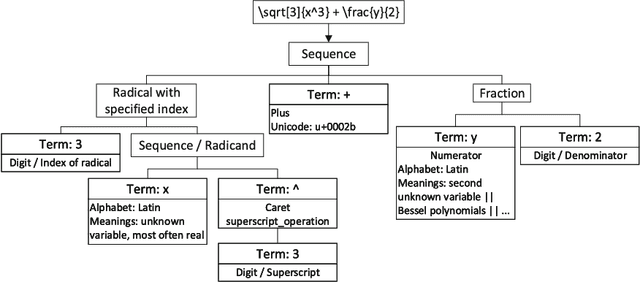
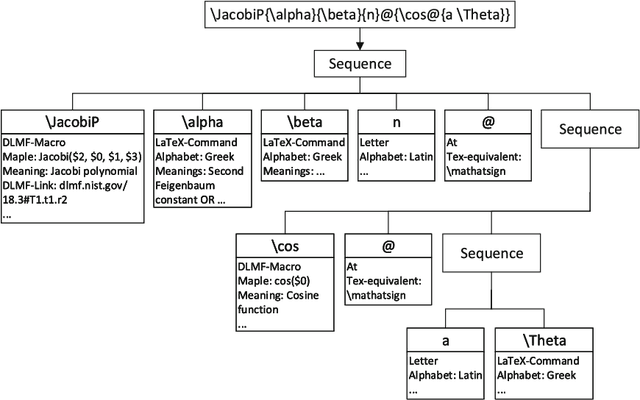
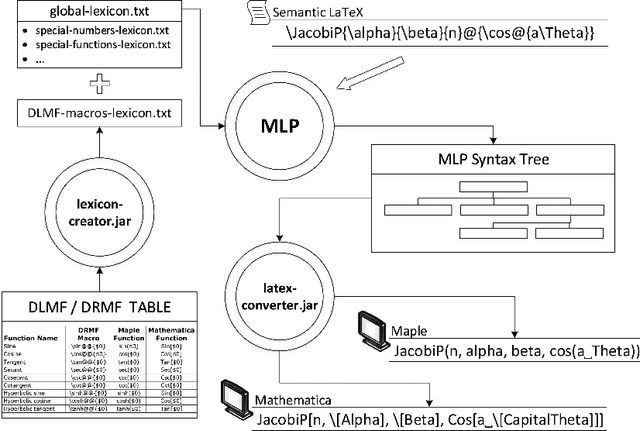
Abstract:Document preparation systems like LaTeX offer the ability to render mathematical expressions as one would write these on paper. Using LaTeX, LaTeXML, and tools generated for use in the National Institute of Standards (NIST) Digital Library of Mathematical Functions, semantically enhanced mathematical LaTeX markup (semantic LaTeX) is achieved by using a semantic macro set. Computer algebra systems (CAS) such as Maple and Mathematica use alternative markup to represent mathematical expressions. By taking advantage of Youssef's Part-of-Math tagger and CAS internal representations, we develop algorithms to translate mathematical expressions represented in semantic LaTeX to corresponding CAS representations and vice versa. We have also developed tools for translating the entire Wolfram Encoding Continued Fraction Knowledge and University of Antwerp Continued Fractions for Special Functions datasets, for use in the NIST Digital Repository of Mathematical Formulae. The overall goal of these efforts is to provide semantically enriched standard conforming MathML representations to the public for formulae in digital mathematics libraries. These representations include presentation MathML, content MathML, generic LaTeX, semantic LaTeX, and now CAS representations as well.
Effective problem solving using SAT solvers
Jun 14, 2019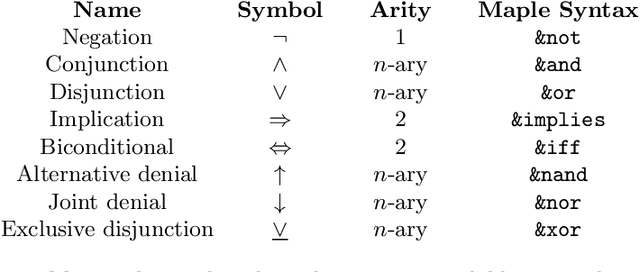
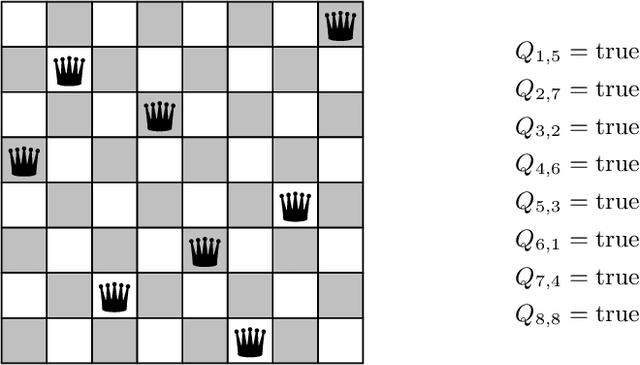
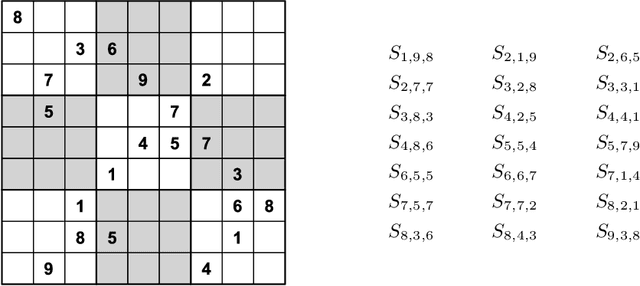
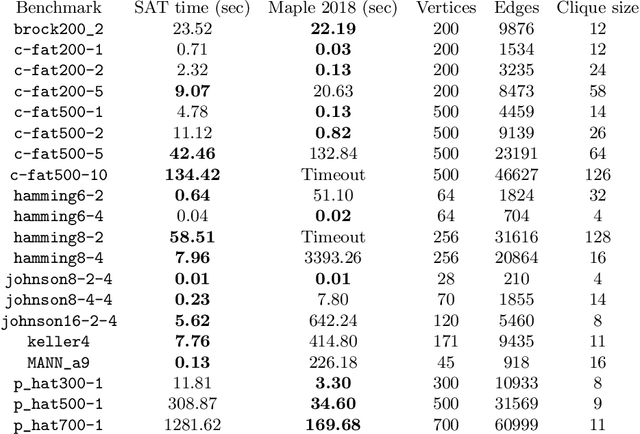
Abstract:In this article we demonstrate how to solve a variety of problems and puzzles using the built-in SAT solver of the computer algebra system Maple. Once the problems have been encoded into Boolean logic, solutions can be found (or shown to not exist) automatically, without the need to implement any search algorithm. In particular, we describe how to solve the $n$-queens problem, how to generate and solve Sudoku puzzles, how to solve logic puzzles like the Einstein riddle, how to solve the 15-puzzle, how to solve the maximum clique problem, and finding Graeco-Latin squares.
 Add to Chrome
Add to Chrome Add to Firefox
Add to Firefox Add to Edge
Add to Edge